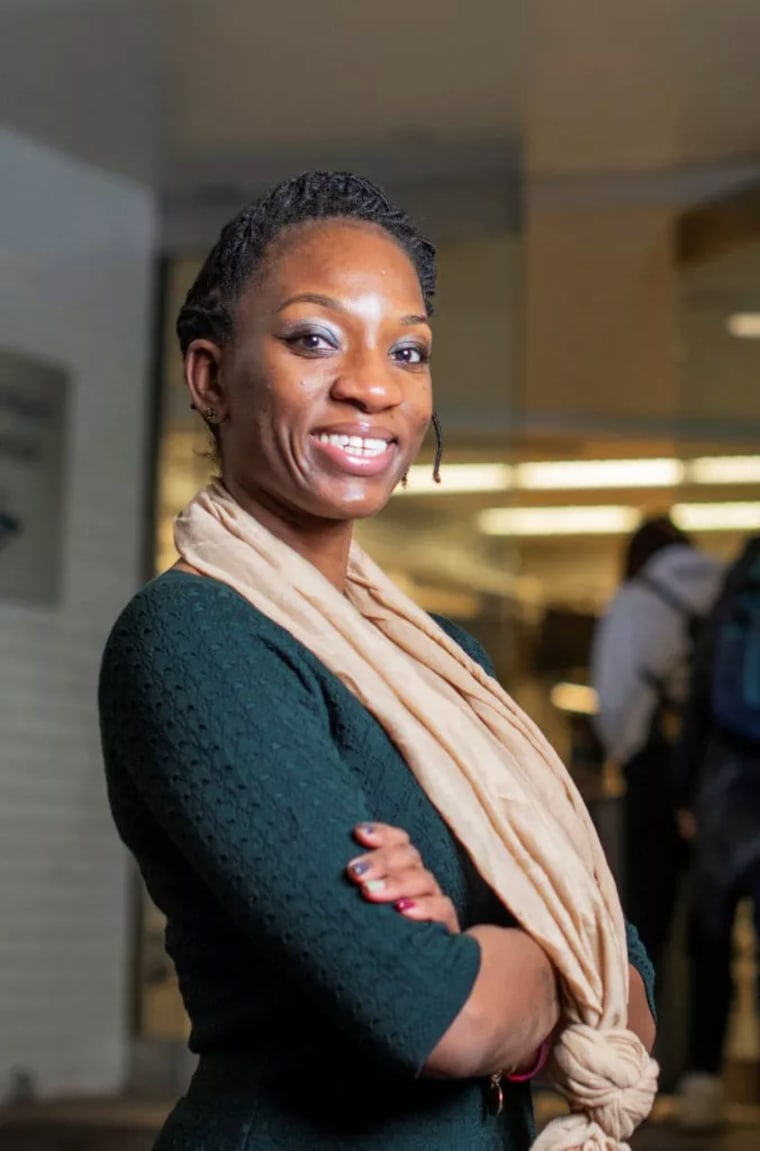Lesbian, bisexual women more successful at the ballot box than gay men, study finds
Last September, Marie Pinkney beat incumbent Delaware state Sen. David McBride in the Democratic primary by a solid margin, before going on to a decisive victory in the general election. Upon winning, Pinkney became not only the first openly queer woman to be elected to the Delaware Senate but one of dozens of LGBTQ female candidates who won their elections in the last cycle.
Pinkney, a social worker, said she was inspired to run because of her work with victims of gun violence and a lack of political will to pass effective gun control legislation.
“I didn’t know if I could actually win,” Pinkney said, “but then I looked at who my state senator was, and I realized he was a serious impediment to gun violence legislation passing or even getting to the floor. That was enough for me.”

As a complete newcomer to politics challenging one of the longest-serving lawmakers in Delaware history, Pinkney’s victory came as a surprise to observers. However, a new report from the LGBTQ Victory Institute, an organization that supports LGBTQ elected officials and political hopefuls, found that the odds aren’t good for those betting against queer female candidates.
A review of the win and loss records of all 1,088 candidates endorsed by the LGBTQ Victory Fund (the political action committee associated with the Victory Institute) from 2016 to 2020 found that queer cisgender women — including lesbian, bisexual and other nonheterosexual women — won 69 percent of the time, compared to 59 percent for queer cisgender men endorsed by the political action committee.
Victory Fund does not track candidates it does not endorse, but its analysis of the 2020 LGBTQ candidates (both endorsed and unendorsed) suggests its candidates are representative of the overall LGBTQ candidate population in terms of race, sexual orientation and gender identification.
Though they are more successful at the ballot box, queer cisgender female candidates were outnumbered by their male counterparts every year covered by the Victory Institute’s report. Queer cisgender women accounted for just 35 percent of Victory Fund-endorsed candidates since 2016, whereas cisgender male candidates accounted for 59 percent.
This means that even if lesbian, bisexual and other nonheterosexual cisgender women started to run at the same rate as their male counterparts, they would not reach electoral parity with queer cisgender men until 2037, the report stated.
“LGBTQ women face unique barriers to running for office — the same sexist campaign tactics and misperceptions of their own qualifications as other women, combined with anti-LGBTQ bias — yet overcoming those obstacles makes them strong contenders by the time they run,” Annise Parker, president and CEO of the Victory Institute and former mayor of Houston, told NBC News. “LGBTQ women candidates tend to wait to run for positions they are qualified — and often overqualified — to hold and perhaps don’t trigger the same negative stereotypes directed at LGBTQ men.”
“Their experiences as women and as LGBTQ people often make them better politicians, portraying an authenticity and sensibility that resonates with voters,” Parker continued. “LGBTQ women make fantastic candidates, and when we run, we win. But we will not achieve representation equitable to LGBTQ men until we start running in much higher numbers.”
Recommended
OUT NEWS‘Not welcome’: Advocates slam Tennessee law requiring transgender bathroom signs
OUT NEWSChinese social media app WeChat deletes university LGBTQ accounts
Among all female candidates, existing research suggests women and men win elections at approximately the same rate and their representational deficit has more to do with barriers to seeking office in the first place. However, endorsements by groups like EMILY’s List and E-Pac (and Victory Fund) reportedly make a large difference in their likelihood of success.
Transgender female candidates were also more likely to succeed than their transmasculine counterparts, winning 54 percent of the time, compared to trans men’s 18 percent success rate, according to the Victory Institute’s report. Nonbinary and gender-nonconforming candidates performed even better, winning 64 percent of the time. But the number of transgender and nonbinary candidates is relatively small. Only 39 of the more than 1,000 candidates tracked by the Victory Institute were transgender women, and only 11 were transgender men. There were also only 11 nonbinary or gender-nonconforming candidates over the five-year period. That said, the 2020 election cycle saw the most trans, nonbinary and gender-nonconforming candidates.
Despite their electoral advantage, queer cisgender women are only 37 percent of LGBTQ elected officials, and transgender women are only 4 percent, according to the Victory Institute. Only 2 percent of LGBTQ elected officials are nonbinary or gender-nonconforming, and approximately 0.5 percent are transgender men. Even queer cisgender men, who make up 56 percent of LGBTQ elected officials, are severely underrepresented when compared to all elected officials.
LGBTQ elected officials represent approximately 0.19 percent of all elected officials nationwide, according to a previous Victory Institute report. To achieve proportionate representation of the United States’ estimated 18 million LGBTQ adults (roughly 5.6 percent of the adult population, according to the most recent Gallup poll), Americans would need to elect 28,128 more LGBTQ people to office — a significant jump from the current total of 974.
As to why she thinks LGBTQ women perform relatively well at the ballot box, Pinkney said LGBTQ people, along with other marginalized groups, generally understand the importance of maintaining a high level of preparedness and taking every opportunity to succeed.
“We don’t have the room for error. We don’t have the room to mess up and make those mistakes,” she said. “It comes off as excellence, but for most marginalized communities, it just feels like everyday operation.”